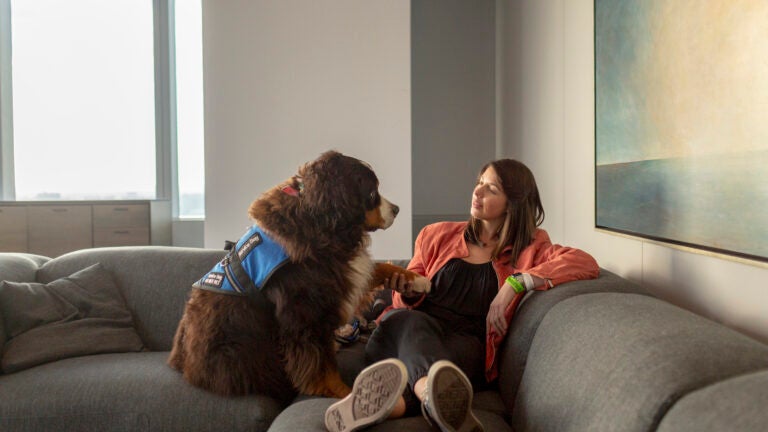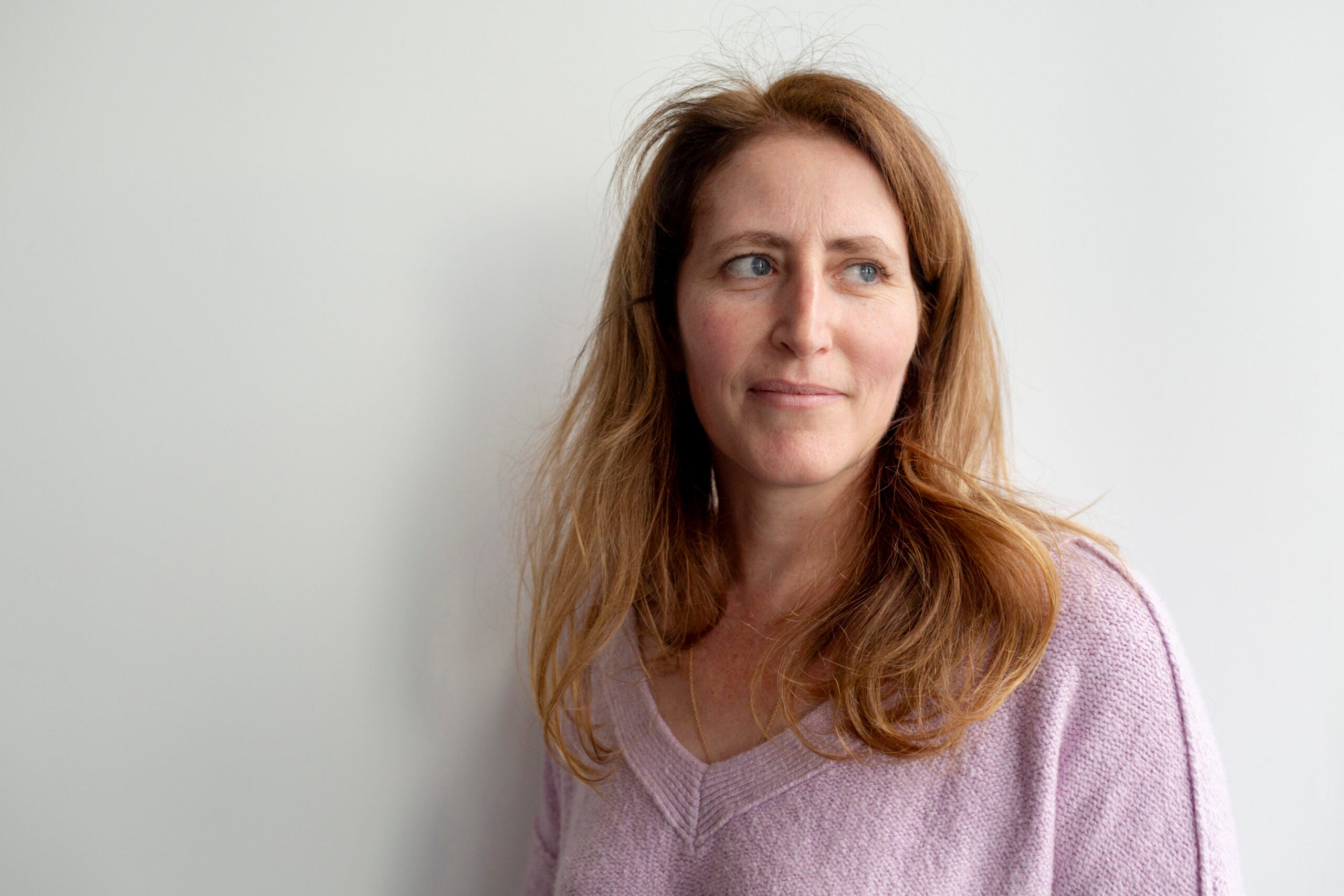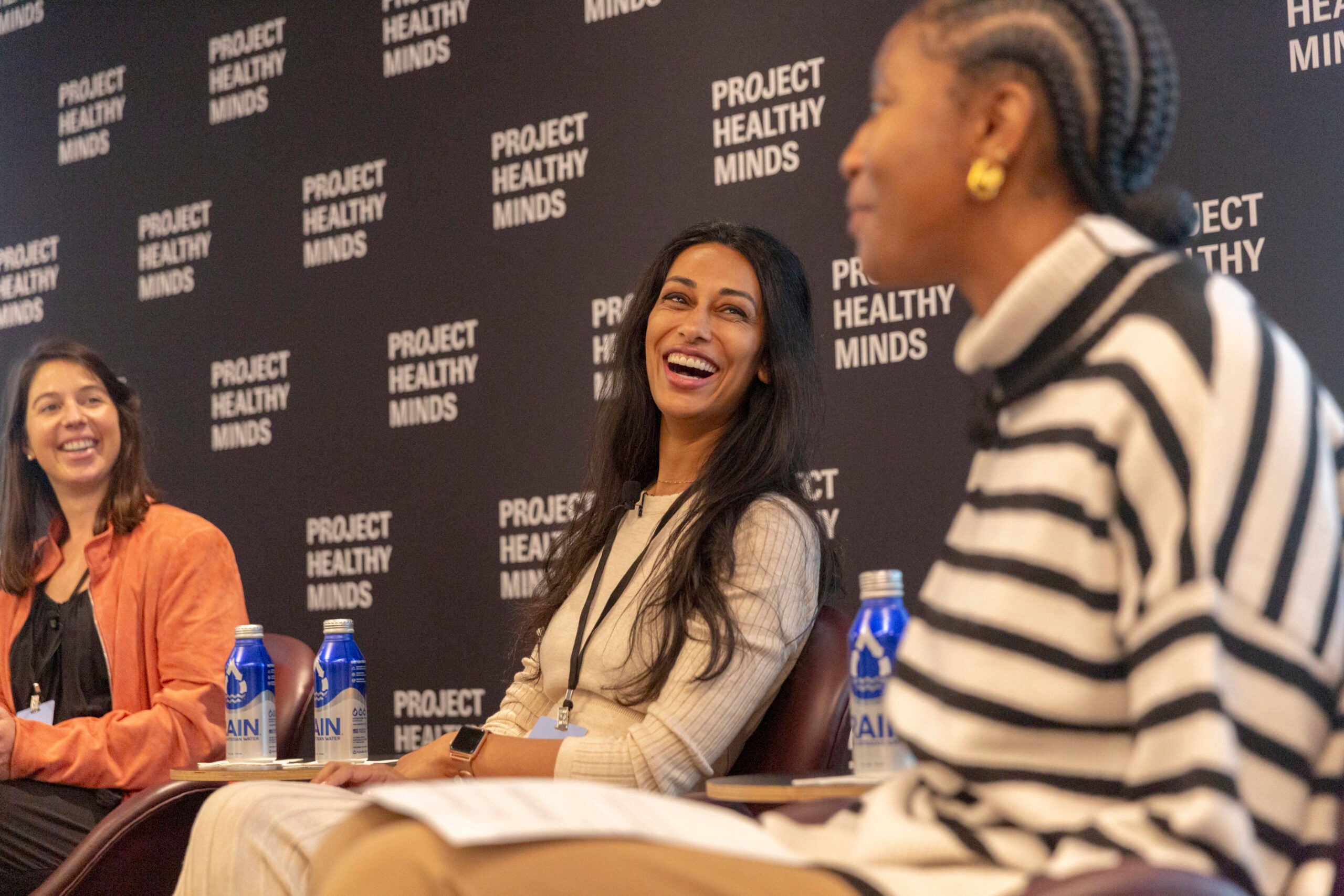Native Information
The T.H. Chan College of Public Well being is constructing its personal group of influencers.

Someday in February, an invite from Harvard College arrived within the inbox of Rachel Havekost, a TikTok psychological well being influencer and part-time bartender in Seattle who likes to joke that her predominant qualification is nineteen years of remedy.
The identical electronic mail arrived for Trey Tucker, aka @ruggedcounseling, a therapist from Chattanooga, Tennessee, who discusses attachment types on his TikTok account, generally whereas loading bales of hay onto the mattress of a pickup truck.
The invites additionally made their option to Bryce Spencer-Jones, who talks his viewers by way of breakups whereas gazing tenderly into the digicam, and to Kate Speer, who narrates her bouts of despair with wry humor, confiding that she has not brushed her tooth for days.
Twenty-five recipients glanced over the emails, which invited them to collaborate with social scientists on the T.H. Chan College of Public Well being at Harvard. They weren’t accustomed to being handled with respect by academia; a number of concluded that the letters had been pranks or phishing makes an attempt and deleted them.
They didn’t know — how might they? — {that a} group of researchers had been observing them for weeks, winnowing down a military of psychological well being influencers into a number of dozen heavyweights chosen for his or her attain and high quality.
The surgeon normal has described the psychological well being of younger individuals in America as “the defining public well being disaster of our time.” For this susceptible, hard-to-reach inhabitants, social media serves as a major supply of knowledge. And so, for a number of months this spring, the influencers grew to become a part of a area experiment, by which social scientists tried to inject evidence-based content material into their feeds.
“Individuals are on the lookout for info, and the issues that they’re watching are TikTok and Instagram and YouTube,” stated Amanda Yarnell, senior director of the Chan College’s Heart for Well being Communication. “Who’re the media gatekeepers in these areas? These are these creators. So we had been , how can we map onto that new actuality?”
The reply to that query grew to become clear in August, when a van carrying a dozen influencers pulled up beside the campus of Harvard Medical College. Every part concerning the area, its Ionic columns and Latin mottos carved in granite, informed the guests that they’d arrived on the excessive temple of the medical institution.
Every of the guests resembled their viewers: tattooed, in baseball caps or cowboy boots or chunky earrings that spelled the phrase LOVE. Some had been psychologists or psychiatrists whose TikToks had been a facet gig. Others had constructed franchises by speaking frankly about their very own experiences with psychological sickness, describing consuming issues, selective mutism and suicide makes an attempt.
On the velvety Quad of the medical faculty, they regarded like vacationers or day-trippers. However collectively, throughout platforms, they commanded an viewers of 10 million customers.
Step 1: The themes
Samantha Chung, 30, who posts below the deal with @simplifying.sam, might by no means clarify to her mom what she did for a residing.
She isn’t a psychological well being clinician — till just lately, she labored as an actual property agent. However two years in the past, a TikTok video she made on “manifesting,” or utilizing the thoughts to result in desired change, attracted a lot consideration that she realized she might cost cash for one-on-one teaching, and stop her day job.
At first, Chung booked one-hour appointments for $90, however demand remained so excessive that she now provides counseling in three- and six-month “containers.” She sees no must go to graduate faculty or get a license; her method, as she places it, “helps shoppers really feel empowered moderately than recognized.” She has a podcast, a e book challenge and 813,000 followers on TikTok.
This accomplishment, nonetheless, meant little to her dad and mom, immigrants from Korea who had hoped she would grow to be a health care provider. “I actually simply considered myself as somebody who makes movies of their condominium,” Chung stated.
The work of an influencer may be isolating and draining, removed from the sunlit glamour that many think about. Havekost, 34, was scuffling with whether or not she might even proceed. After years of battling an consuming dysfunction, the topic of her current e book, she was feeling secure, which didn’t generate psychological well being content material; that was one drawback.
The opposite drawback was cash. She is fastidious about endorsement offers, and nonetheless has to have a tendency bar half time to make ends meet. “I’ve turned down an ice cream model that needed to pay me some huge cash to publish a TikTok saying it was low sugar,” Havekost stated. “That sucked, as a result of I needed to flip down my lease.”
At Harvard, the influencers had been handled like dignitaries, supplied with branded merchandise and buffet lunches as they listened to lectures on air high quality and well being communication. Occasionally, the lecturers broke into jargon, referring to multivariate regression fashions and the Bronfenbrenner mannequin of habits principle.
Throughout a break, Jaime Mahler, a licensed counselor from New York, remarked on this. In her movies, she prides herself on distilling advanced medical concepts into digestible nuggets. On this respect, she stated, Harvard might study loads from TikTok.
“She stored utilizing the phrase ‘heuristics,’ and that was truly a real distraction for me,” Mahler stated of 1 lecturer. “I remembered her telling me what it was to start with, and I didn’t need to Google it, and I stored getting distracted. I used to be like, Oh, she used it once more.”
However the principle factor the friends needed to specific was gratitude. “I spent my 20s in a psychiatric ward making an attempt to graduate from school,” stated Speer, 36. “Strolling into these rooms at Harvard and being held lovingly — truthfully, it’s nothing greater than miraculous.”
Chung was so impressed that she informed the assembled crowd that she would now publish as an activist. “I’m strolling out of this understanding the reality, which is that I’m a public well being chief,” she stated. When Meng Meng Xu, one of many researchers on the Harvard group, heard that, she received goose bumps. This was precisely what she had been hoping for.
Step 2: The sector experiment

Many lecturers take a dim view of psychological well being TikTok, viewing it as a Wild West of unscientific recommendation and overgeneralization. Social media, researchers have discovered, typically undermines established medical pointers, warning viewers off evidence-based therapies comparable to cognitive behavioral remedy or antidepressants, whereas boosting curiosity in dangerous, untested approaches comparable to semen retention.
TikTok, which has grappled with tips on how to reasonable such content material, stated just lately that it might direct customers trying to find a variety of situations comparable to despair or nervousness to info from the Nationwide Institute of Psychological Well being and the Cleveland Clinic.
At their worst, researchers stated, social media feeds can function a darkish echo chamber, barraging susceptible younger individuals with messages about self-harm or consuming issues.
“Your coronary heart simply sinks,” stated Corey H. Basch, a professor of public well being from William Paterson College who led a 2022 examine analyzing 100 TikTok movies with the hashtag #mentalhealth.
“Should you’re feeling low and you’ve got a dismal outlook, and for some motive that’s what you might be drawn to, you’ll go down this rabbit gap,” she stated. “And you would simply sit there for hours watching movies of people that simply need to die.”
Basch doubted that content material creators might show to be helpful companions for public well being. “Influencers are within the enterprise of making a living for his or her content material,” she stated.
Yarnell doesn’t share this opinion. A chemist who pivoted to journalism, she discovered TikTok “a wealthy and thrilling place” for scientists. She views influencers — she prefers the extra respectful time period “creators” — not as click-hungry amateurs however as impartial media firms, making cautious decisions about partnerships and, at occasions, being motivated by altruism.
As well as, she stated, they’re good at what they do. “They perceive what their viewers wants,” Yarnell stated. “They’ve completed an enormous quantity of storytelling that has allowed stigma to fall away. They’ve been an enormous a part of convincing individuals to speak about totally different psychological well being considerations. They’re an ideal translation companion.”
This isn’t the primary time that Harvard’s public well being specialists have tried to hitch a journey with in style tradition. In 1988, as a part of a marketing campaign to stop visitors fatalities, researchers requested writers for prime-time tv packages comparable to “Cheers” and “L.A. Legislation” to jot down in references to “designated drivers,” an idea that was, on the time, totally new to Individuals. That effort was famously profitable; by 1991, the phrase was so frequent that it appeared in Webster’s dictionary.
Impressed by this effort, Yarnell designed an experiment to find out whether or not influencers may very well be persuaded to disseminate extra evidence-based info. First, her group developed a pool of 105 influencers who had been each distinguished and accountable: no diet-pill endorsements, no “5 indicators you’ve ADHD.”
The influencers wouldn’t be paid however, ideally, can be received over to the trigger. Forty-two of them agreed to be a part of the examine and obtained digital software kits organized into 5 “core themes”: problem accessing care, intergenerational trauma, mind-body hyperlinks, the impact of racism on psychological well being and local weather nervousness.
A smaller group of 25 influencers additionally obtained lavish, in-person consideration. They had been invited to hourlong digital boards, united on a gaggle Slack channel and, lastly, hosted at Harvard. However the core themes had been what the researchers had been watching. They’d control the influencers’ feeds and measure how a lot of Harvard’s materials had ended up on-line.
Step 3: This examine isn’t with out limitations
A month after the gathering, Havekost was as soon as once more feeling depleted. It wasn’t that she didn’t care about her responsibility as a public well being chief — quite the opposite, she stated, “each time I publish one thing now, I take into consideration Harvard.”
However she noticed no easy option to combine public well being messages into her movies, which continuously function her dancing uninhibitedly, or gazing on the viewer with an expression of unconditional love whereas textual content scrolls previous. Her viewers is aware of her communication type, she stated; examine citations wouldn’t really feel any extra genuine than cleavage enhancement.
Tucker, again in Chattanooga, reached an analogous conclusion. He has 1.1 million TikTok followers, so he is aware of which themes appeal to viewers. Trauma, nervousness, poisonous relationships, narcissistic personalities, “these are the catnip, so to talk,” he stated. “Mainly, stuff that feeds the sufferer mentality.”
He had tried a few movies based mostly on Harvard analysis — for instance, on the way in which the mind responds to the sound of water — however they’d carried out poorly together with his viewers, one thing he thought could be a operate of the platform’s algorithm.
“They don’t seem to be actually making an attempt to assist unfold good analysis,” Tucker stated. “They’re making an attempt to maintain eyeballs engaged to allow them to maintain watch occasions so long as doable and cross that onto advertisers.”
It was totally different for Speer. After getting back from Harvard, she obtained an electronic mail from S. Bryn Austin, a professor of social and behavioral sciences and a specialist in consuming issues, proposing that they collaborate on a marketing campaign to ban the sale of weight-loss drugs to minors in New York state.
Speer was elated. She set to work placing collectively a sizzle reel and a grant proposal. As summer season turned to fall, her life appeared to have turned a nook. “That’s what I need to do,” she stated. “I need to do it for good, as a substitute of, you understand, for lip gloss.”
Step 4: System-level results

Final week, in a convention room overlooking the Hudson River, Yarnell and certainly one of her co-authors, Matt Motta, of Boston College, introduced the outcomes of the experiment.
It had labored, they introduced. The 42 influencers who obtained Harvard’s speaking factors had been 3% extra prone to publish content material on the core themes researchers had fed them. Though that will seem to be a small impact, Motta stated, every influencer had such a big viewers that the extra content material was seen 800,000 occasions.
These successes bore little resemblance to peer-reviewed research. They regarded like @drkojosarfo, a psychiatric nurse practitioner with 2.4 million followers, dancing in a galley kitchen alongside textual content on the mind-body hyperlink, or the consumer @latinxtherapy throwing shade on insurance coverage firms whereas lip-syncing to the influencer Shawty Bae.
The uptake appeared to be pushed by the distribution of written supplies, with no extra impact amongst topics who had deep interactions with Harvard college. That was surprising, Yarnell stated, but it surely was excellent news, since digital software kits are low cost and straightforward to scale.
“It’s easier than we thought,” she stated. “These written supplies are helpful to creators.”
However the largest impact was one thing that didn’t present up within the information: the formation of latest relationships. Seated beside Yarnell as she introduced the experiment’s outcomes had been two of its topics: Speer, together with her service canine, Waffle, who’s skilled to paw at her when he smells elevated cortisol in her sweat, and Dr. Sasha Hamdani, a psychiatrist in Kansas who presents info on ADHD to the accompaniment of sea shanties.
Contact had been made. Within the viewers, the Brooklyn-dad influencer Timm Chiusano was questioning about tips on how to construct his personal partnership with Harvard’s College of Public Well being. “I’m going to 1,000% obtain that software package as quickly as I can,” he stated.
However who was boosting who? Mahler, who was selling a brand new e book on poisonous relationships, sounded just a little unhappy when she thought-about her companions in academia. “Harvard has this ample data base,” she stated, “if they will simply discover a approach of connecting to the individuals doing the digesting.”
She had realized an important deal about scientists. In some circumstances, Mahler stated, they spend 10 years on a analysis challenge, publish an article, “and possibly it will get picked up, however generally it by no means reaches most people in a approach that actually adjustments the dialog.”
“My coronary heart type of breaks for these individuals,” she stated.
This text initially appeared in The New York Occasions.